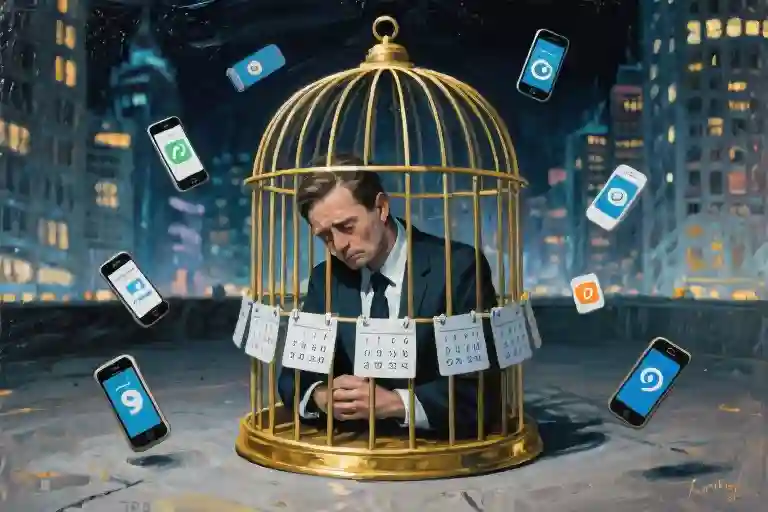I remember the weight of my mother’s shoulders trembling under my palm, the way my sister’s sobs seemed to sync with the creaking of the wooden coffin being carried out. Morning light slanted through the doorway, catching dust motes that swirled around the undertaker’s polished shoes. My fingers kept moving in slow circles on their backs – a mechanical rhythm detached from the storm inside them, inside the house, inside what should have been me.
Neighbors whispered praises about my composure as I handed out funeral programs, their words sticking to my skin like static: “She’s holding up so well,” “What remarkable strength.” Their admiration felt like a costume I hadn’t chosen to wear. When the hearse doors closed with a muffled thud, I realized I’d been counting the chrome bolts on its bumper instead of weeping for the man inside.
That disconnect haunted me more than the loss itself in those early days. I could describe the exact pattern of water stains on the church ceiling during the service, but when asked how I felt about my father’s death, my mind produced only polite white noise. “I’m managing” became my refrain – to cousins bringing casseroles, to coworkers sending condolence emails, even to my own reflection in the bathroom mirror at 3AM when insomnia struck.
The strangest part wasn’t the absence of tears; it was how efficiently I functioned through the motions of mourning. Within a week I’d sorted his closet, donated his reading glasses to the optometrist, even laughed at a friend’s joke over brunch. My social media showed carefully curated snaps of sunsets and coffee art, the digital equivalent of a “Business As Usual” sign hung on a boarded-up storefront. This performance of normalcy was so convincing that I started believing it myself – until the nightmares came.
Four years later, I still jolt awake with the echo of his voice in my ears, still find myself crying at laundry detergent commercials that use the same jingle he used to whistle. The delayed grief reaction hit like a rogue wave, dragging me under with all the sorrow my mind had postponed. What I once mistook for coldness was simply my brain’s emergency protocol – pressing pause on emotions too vast to process in the glare of funeral flowers and sympathy cards.
We rarely talk about how grief can wear camouflage. In a culture that expects visible anguish as proof of love, those of us who grieve in stealth mode often face double the pain: the original loss, plus the crushing guilt of not performing loss correctly. But survival mechanisms don’t follow scripts. Sometimes the heart breaks so completely that the only way to keep breathing is to not feel the fracture at all – until you’re strong enough to survive the reckoning.
The Funeral I Couldn’t Feel
The morning light came through the windows at an angle I’d never noticed before, slicing across the floor where my father’s coffin rested. I watched the undertaker’s shoes as they moved through the house – polished black leather with dried mud clinging to the soles, tiny clumps of earth from the graveyard they’d just visited for some other family’s sorrow. My mother’s body shook against my left arm while my sister’s tears soaked through the sleeve on my right. I remember counting the water stains spreading across my blouse like some bizarre arithmetic of grief.
Neighbors whispered behind their hands as the pallbearers lifted the casket. “She’s holding up so well,” someone murmured. The words curled around me like smoke, acrid and suffocating. Their approval felt heavier than the coffin itself. I mechanically patted my sister’s heaving shoulders, noting how her crying made a rhythmic sound against my collarbone – huh-huh-huh like a stalled engine. My own eyes stayed desert-dry.
Later, people would call me strong. They’d marvel at how I handed out sandwiches to mourners, how I remembered everyone’s coffee preferences. What they didn’t see was the peculiar detachment, as if I were watching myself perform these rituals from another room. When my aunt pressed my hand and said “You’re being so brave,” I wanted to scream that bravery requires feeling something first. All I had was this eerie competence, this emotional anesthesia that let me function while everyone else fell apart.
The disconnect frightened me most at night. While my sister’s sobs echoed through the house and my mother’s muffled weeping leaked under bedroom doors, I lay staring at the ceiling. I’d mentally rehearse all the reasons I should be crying – his laugh when telling terrible jokes, the way he always burned toast on Sunday mornings, the unfinished chess game in the den. Nothing. Just this hollowed-out calm, like someone had scooped out my insides and left the shell perfectly intact.
That mud on the undertaker’s shoes haunted me afterward. However many times I cleaned our floors, I imagined seeing those little crumbs of dirt, evidence that death had passed through our home and taken something vital while leaving me bizarrely untouched. At the time, I mistook numbness for strength. It would take years to understand that my brain had simply pressed pause on grief, storing the pain somewhere deeper and darker to be processed in nightmares rather than daylight.
The Lies My Mind Told Me
The day after my father’s funeral, I posted a gym selfie on Instagram. My biceps looked particularly defined that morning – the kind of trivial detail your mind latches onto when it’s refusing to process the weight in your chest. The caption read “New day, new gains” with a flexing emoji. Seventeen people liked it before noon.
This became my pattern: constructing a flawless digital persona while privately cataloging all the ways I wasn’t falling apart. I tallied my “I’m fine” declarations like merit badges – 32 to coworkers, 14 to relatives, countless automated responses to well-meaning acquaintances. My LinkedIn activity spiked that month; professional updates felt safer than emotional ones.
For nearly four years, this performance held. Then the dreams started. Not the warm, nostalgic kind where departed loved ones visit, but cruel simulations of normalcy – my father appearing as a missed call notification, his voicemail box perpetually full. I’d wake clutching my phone, the sheets damp with sweat I couldn’t explain.
The real unraveling happened in aisle seven of the grocery store. They were playing his favorite Sinatra song – the one he’d sing off-key while making Sunday pancakes. My knees hit the linoleum before I registered the nausea. As a stock boy rushed over with a trash can, I finally understood: grief had been circling me like a shark in deep water, and my carefully maintained surface calm meant nothing.
What no one tells you about emotional numbness is how physically it manifests later. The body keeps receipts for every feeling you defer. My hands would shake holding coffee cups. I developed sudden allergies to certain fabrics. Once, during a work presentation, my vision blurred so severely I had to excuse myself – only to realize I wasn’t having a medical episode, but fighting tears over a client’s father-daughter anecdote.
This wasn’t the clean, cinematic mourning I’d seen in movies where characters weep prettily into handkerchiefs. My delayed grief came in jagged, unpredictable waves – inconvenient, messy, and embarrassingly specific. A whiff of his cologne on a passerby could leave me breathless; finding his handwritten grocery list would paralyze me for hours.
The cruelest lie my mind told? That by avoiding the pain, I was honoring him. In reality, that gym selfie wasn’t strength – it was fear masquerading as resilience. Every automated “I’m fine” further postponed the necessary work of grieving. What looked like moving on was simply the quiet desperation of a heart trying to outrun its own breaking.
When the Mind Hits Pause
The human brain has an emergency protocol for unbearable pain. Mine activated the moment the funeral director adjusted my father’s tie in the casket—a gesture so ordinary it made my throat constrict. For four years, I mistook this survival mechanism for emotional deficiency, not realizing my psyche had strategically pressed pause on grief.
The Biology of Emotional Shutdown
Neurologists call this dissociation—the mind’s equivalent of a circuit breaker tripping during a power surge. My prefrontal cortex, overwhelmed by the voltage of loss, simply disconnected the emotional wiring. Studies in The Journal of Traumatic Stress show this isn’t rare: 17% of bereaved individuals report delayed grief reactions, their brains prioritizing basic functioning over emotional processing.
I became a case study in this phenomenon:
- Selective Numbness: Could discuss mortgage rates but not his favorite chair
- Hyperproductivity: Wrote 30,000 words in the month after his death
- Emotional Albinism: Sunburned by sentiments that never used to penetrate
Complicated Grief vs. Self-Preservation
The DSM-5 outlines three markers of complicated grief—I scored zero initially, yet all three emerged years later:
- Persistent Yearning (manifesting as midnight Google searches for his old emails)
- Avoidance (taking alternate routes to bypass his regular diner)
- Disrupted Identity (forgetting I was someone’s daughter during introductions)
What psychiatrists don’t always clarify: this isn’t failure to mourn, but the mind’s ingenious—if imperfect—rescue attempt. Like blood vessels constricting during hemorrhage, my emotions narrowed to a survivable trickle.
The Thaw Begins in the Body
My first real tear came 1,217 days post-funeral, triggered by a supermarket sample of his preferred rye bread. Neurologist Bessel van der Kolk’s research explains why: The Body Keeps the Score. Grief bypassed my frozen heart and emerged through:
- Tactile Memory: Hands shaking when holding his wristwatch
- Olfactory Flashbacks: Panic at his cologne on a stranger
- Vestibular Confusion: Literal staggering when recalling our last hike
This somatic rebellion proved my brain wasn’t cold—it had been preserving the pain at perfect cellar temperature until I could handle the vintage.
Your Mind Isn’t Betraying You
If you’re reading this while guiltily counting your dry-eyed days post-loss, consider:
- Timelines Lie: Grief has no expiration date
- Strength Isn’t Silent: My “stoicism” was actually fragility in disguise
- The Mind Knows Best: Your psyche may be pacing your pain better than any therapist could
The tears will come—perhaps through a song, a scent, or the simple horror of realizing you’ve forgotten the sound of their laugh. When they do, you’ll understand: your brain wasn’t freezing you out. It was keeping you alive until you could finally feel.
Letting the Wave Hit Me
The first time I cried for my father was in a CVS aisle, staring at a bag of peanut M&Ms—his favorite road trip snack. It had been four years, three months, and sixteen days since the funeral where I’d been the composed one. Grief works in cruel tides; it retreats just long enough to make you believe you’ve escaped, then drags you under when you’re buying toothpaste.
The Permission Slip
For months after that supermarket breakdown, I carried a notecard in my wallet with a sentence borrowed from my therapist: “Avoidance is grief wearing camouflage.” It became my psychological permission slip. Where I’d previously judged myself for not feeling, I began noting the subtle ways sorrow seeped through:
- Physical tells: Jaw clenched during father-daughter movie scenes
- Behavioral leaks: Taking detours to avoid the diner where we shared pancakes
- Cognitive echoes: Still saving articles he’d find interesting
These weren’t failures to mourn—they were mourning. The brain often processes loss in sideways motions before direct confrontation becomes possible.
Tools for When the Dam Breaks
When delayed grief finally surfaces, the intensity can feel like drowning. These strategies helped me breathe:
1. The 10-Minute Diary Technique
Every morning, I’d set a timer and write exactly what came up—no censorship. The prompt “Today I avoided…” often revealed more than “Today I felt…” Early entries looked like this:
“Avoided the garage (his tools still there). Avoided calling Mom (she might mention him). Ate lunch at my desk to skip the breakroom (co-worker has his laugh).”
2. Body Scanning for Stored Grief
Trauma specialist Bessel van der Kolk’s research confirmed what my nightmares hinted—the body keeps score. A simple practice:
- Lie flat, palms up
- Mentally trace from toes to scalp
- Note areas of tension without judgment
- Breathe into clenched spots (my right shoulder held his last hug)
3. The ‘Maybe Tomorrow’ Rule
For items too painful to handle—his voicemails, the golf clubs in the basement—I’d say aloud: “Not today. Maybe tomorrow.” This honored my limits while leaving the door ajar.
When to Seek reinforcements
While delayed grief is normal, these signs suggested I needed professional support:
- Nightmares persisting beyond six months
- Emotional flashbacks (sudden rage at happy families)
- Physical symptoms (unexplained nausea on his birthday)
The International Grief Support Network helped me find a therapist specializing in complicated bereavement. Our first breakthrough came when she reframed my social media posts post-funeral: “Were you documenting happiness—or proving you could still feel something?”
The Unfinished Work
Now when tears come—during a car commercial, seeing his handwriting on an old recipe—I let them. Not as breakdowns, but as belated love letters. Grief isn’t a linear process; it’s more like learning a new language where fluency comes in fragments.
What surprised me most? The moments that didn’t wreck me. Last week, I finally opened his toolbox. The smell of sawdust and WD-40 should have leveled me. Instead, I oiled the rusty hinges on my back gate—his voice in my ear saying “That’s my girl.”
Maybe healing looks less like moving on, and more like letting the past sit shotgun.
The Quiet War After the Battle
The credits roll on a predictable father-son reunion scene, the kind I used to mock for its sentimental manipulation. Yet here I am, wiping my cheeks in the dark theater, grateful for the anonymity of popcorn-munching strangers. Four years ago, I couldn’t shed a tear when they carried my father’s coffin through our front door; now I dissolve at mediocre screenwriting.
This is how delayed grief operates—not with the dramatic collapse everyone expects at funerals, but through supermarket breakdowns when his favorite song plays, through waking at 3 AM convinced I’ve missed his call. The nightmares still come, though less frequently. Sometimes they’re literal—replaying those final days in grotesque detail. Other times they’re symbolic: searching for him in endless airport terminals, receiving letters with fading ink I can’t decipher.
What no one tells you about emotional numbness is how physically exhausting it becomes. The energy required to maintain that facade of normalcy—posting vacation photos, discussing weekend plans—left me perpetually drained. My body rebelled before my mind could: migraines, sudden weight loss, a tremor in my hands that made baristas give me concerned looks. The mind’s protective dissociation (that psychological pause button) only works temporarily. Eventually, the body demands payment for borrowed time.
I’ve learned to recognize the signs in others now—the coworker who jokes too brightly about her mother’s passing, the neighbor who repaints his entire house after losing his wife. We’re not heartless; we’re heartsick in slow motion. Grief isn’t a performance with prescribed stages. It’s learning to live with the invisible weight of someone’s absence, the way a tree grows around a fence post until the metal becomes part of its structure.
These days, I keep a list on my phone titled ‘Proof I Loved Him’—not because I need convincing anymore, but because memory decays faster than we admit. It holds mundane things: how he peeled apples in one continuous spiral, the terrible puns he’d make during thunderstorms, the way his left shoelace always came untied. Some entries are bittersweet—’He never saw me publish a book’—but most are ordinary. That’s the quiet truth no one mentions: what we mourn hardest often isn’t the milestones, but the thousand insignificant moments we assumed would always continue.
A therapist once told me that delayed grief is like receiving a package with fragile contents—your psyche wraps it carefully in layers of denial and routine until you’re strong enough to open it. The wrapping isn’t cowardice; it’s survival. Now when I see commercials with fathers teaching kids to ride bikes, or when his birthday notification pops up on old calendar apps, I let the wave hit. Sometimes it’s a sigh. Sometimes it’s heaving sobs in the shower. Both are valid.
Grief isn’t a performance—it’s the quiet war after the battle. And like all wars, it changes the landscape forever, carving new rivers where there were once plains.





